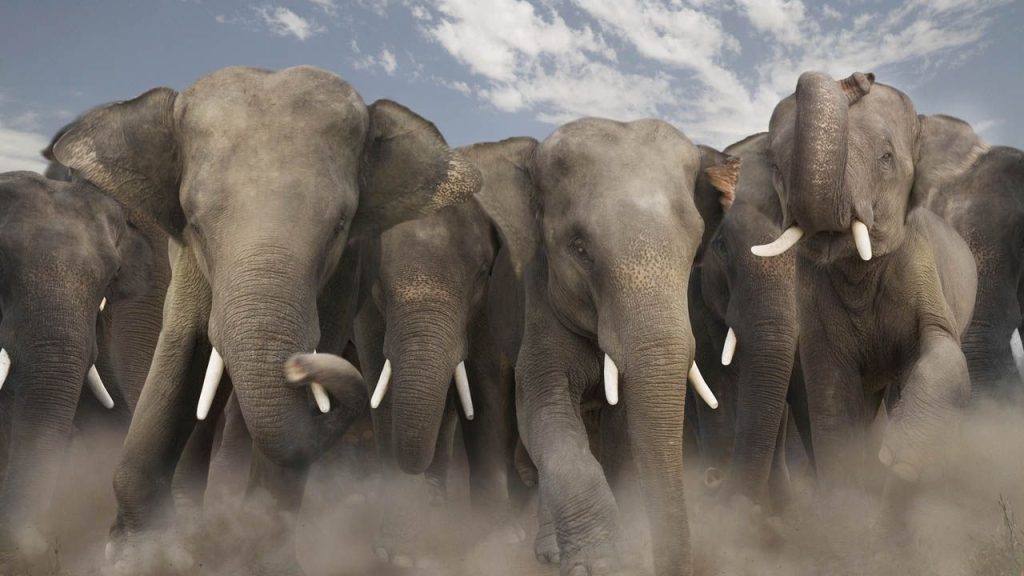SUNDARGARH, India – Herds of wild elephants in Sundargarh have moved into human settlements, triggering widespread panic, destroying vast tracts of ready-to-harvest crops, and damaging homes. The incursions, affecting dozens of villages in this eastern Indian district, underscore the escalating human-elephant conflict, a critical challenge for both residents and conservation authorities in the state of Odisha.

The Immediate Crisis: Villages Under Siege
Over the past several weeks, multiple elephant herds have been reported roaming through the Bonai Forest Division of Sundargarh district. One herd, numbering around 40 elephants, has been particularly destructive in the Koida and Bonai ranges, while another group of approximately 25 elephants has been tracked moving through the Nuagaon block after reportedly crossing over from the neighboring state of Jharkhand.
Local residents report living in a state of constant fear, especially after sunset. “We are forced to stay indoors after dusk. The elephants move in large groups, and it is unsafe to be outside,” a villager from the Nuagaon block told local media. The animals have been seen foraging in paddy fields, consuming and trampling crops that are crucial for the local agricultural economy. In several instances, elephants have also damaged the walls of mud houses in their search for stored grains.
Widespread Crop Damage and Official Response
The economic toll on local farmers is significant. The herds have laid waste to hectares of paddy and vegetable crops, representing a substantial loss of income for communities that are heavily dependent on agriculture.
Forest Department Action
The Odisha Forest Department has mobilized teams to monitor the herds and prevent further damage. “Our squads are on high alert and are continuously tracking the movement of the elephants,” said a senior forest official from the Sundargarh division. “We are using traditional methods like firecrackers and drum beats to drive them away from human habitations and back towards the forest.”
These efforts are often hampered by the sheer size of the herds and the vast, often difficult terrain. Officials are also tasked with ensuring the safety of both the elephants and the human population, a delicate balancing act that requires constant vigilance.
Compensation and Support
The government has a provision to provide compensation to farmers for crop damage and property loss caused by wildlife. However, villagers often report that the process can be slow and the compensation amount may not fully cover their losses. Forest officials have assured residents that they are documenting the damage for swift processing of claims.
The Broader Context of Human-Elephant Conflict
The events in Sundargarh are not an isolated incident but a symptom of a larger, nationwide issue. India is home to over 60% of the global Asian elephant population, and the instances of human-elephant conflict have been on the rise.
Shrinking Habitats and Fragmented Corridors
Conservation experts point to habitat loss and fragmentation as the primary drivers of this conflict. According to a report by the World Wide Fund for Nature (WWF) India, the expansion of agriculture, infrastructure projects like roads and railways, and mining have shrunk and degraded elephant habitats. This forces the animals to venture into human-dominated landscapes in search of food and water.
Elephant corridors—narrow strips of land that connect larger forest patches—are crucial for their movement. When these corridors are blocked or destroyed, elephants are often funneled directly into villages and farmlands. The Sundargarh region, with its rich mineral resources and increasing industrial activity, has seen significant changes in land use, exacerbating the problem.

The National Toll
The conflict carries a heavy cost. Data from India’s Ministry of Environment, Forest and Climate Change (MoEFCC) reveals that on average, nearly 500 people and 100 elephants die each year in conflicts across the country. Odisha is consistently one of the states with the highest number of human fatalities.
Ramesh Majhi Arrested for Alleged ₹20 Crore Gold Investment Fraud in Odisha
Odisha Empowers Local Bodies with Food Policy Control, Boosts Farmer Support & Tweaks GST.
Dispute Over ₹15 Escalates into a Scuffle Between TTE and Passenger in Berhampur
Finding a lasting solution requires a multi-pronged approach. “Long-term solutions must focus on securing elephant corridors, restoring habitats, and working with local communities to create early warning systems and elephant-proof crop protection methods,” said a researcher with the Wildlife Trust of India (WTI).
As the Forest Department continues its challenging work on the ground in Sundargarh, the affected villagers wait anxiously for the herds to retreat. The situation remains tense, serving as a stark reminder of the urgent need for strategies that allow for the peaceful coexistence of humans and wildlife.





